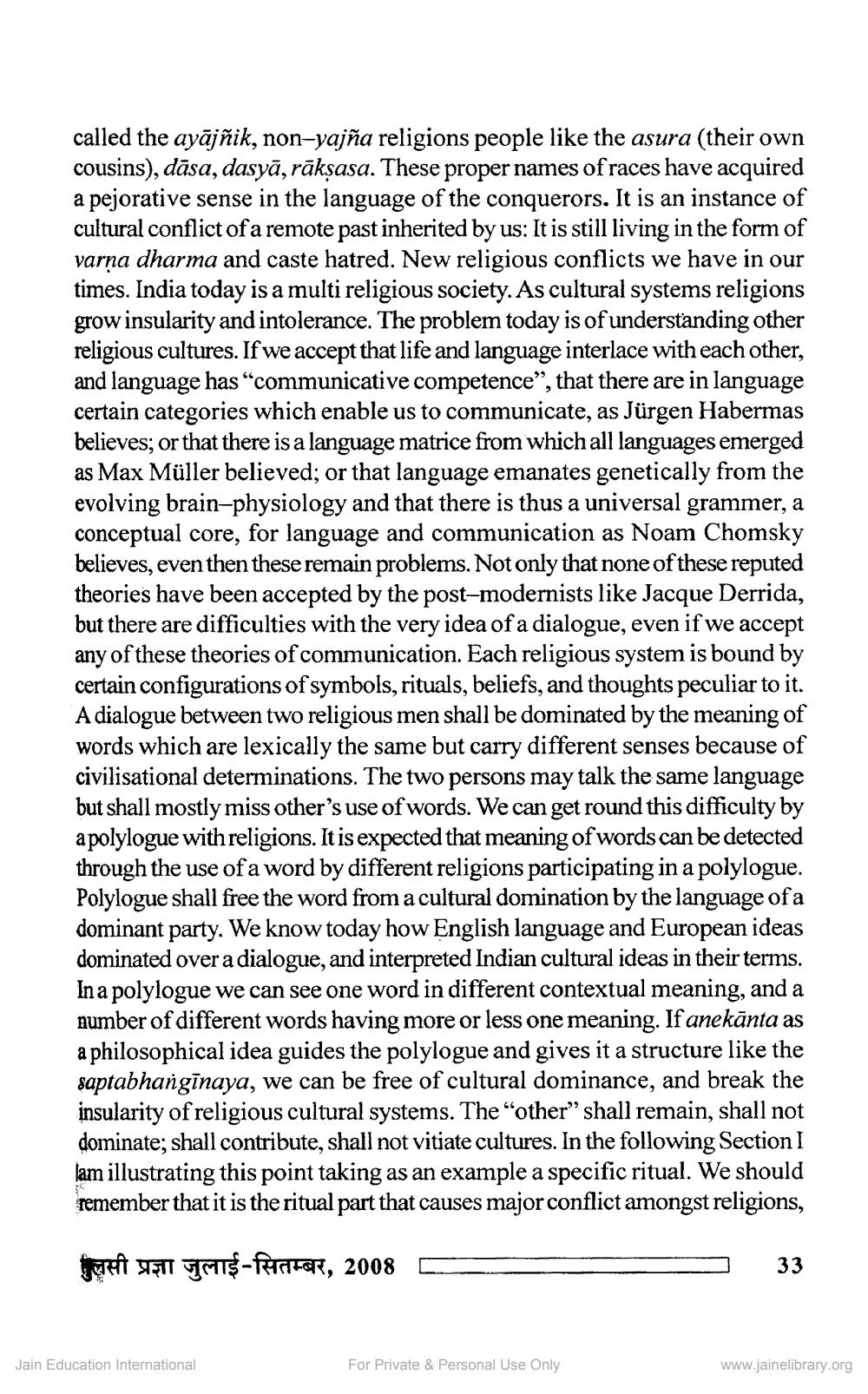________________
called the ayāj ñik, non-yajña religions people like the asura (their own cousins), dāsa, dasyā, rāksasa. These proper names of races have acquired a pejorative sense in the language of the conquerors. It is an instance of cultural conflict of a remote past inherited by us: It is still living in the form of varna dharma and caste hatred. New religious conflicts we have in our times. India today is a multi religious society. As cultural systems religions grow insularity and intolerance. The problem today is of understanding other religious cultures. If we accept that life and language interlace with each other, and language has "communicative competence”, that there are in language certain categories which enable us to communicate, as Jürgen Habermas believes; or that there is a language matrice from which all languages emerged as Max Müller believed; or that language emanates genetically from the evolving brain-physiology and that there is thus a universal grammer, a conceptual core, for language and communication as Noam Chomsky believes, even then these remain problems. Not only that none of these reputed theories have been accepted by the post-modernists like Jacque Derrida, but there are difficulties with the very idea of a dialogue, even if we accept any of these theories of communication. Each religious system is bound by certain configurations of symbols, rituals, beliefs, and thoughts peculiar to it. A dialogue between two religious men shall be dominated by the meaning of words which are lexically the same but carry different senses because of civilisational determinations. The two persons may talk the same language but shall mostly miss other's use of words. We can get round this difficulty by a polylogue with religions. It is expected that meaning of words can be detected through the use of a word by different religions participating in a polylogue. Polylogue shall free the word from a cultural domination by the language of a dominant party. We know today how English language and European ideas dominated over a dialogue, and interpreted Indian cultural ideas in their terms. In a polylogue we can see one word in different contextual meaning, and a number of different words having more or less one meaning. If anekānta as a philosophical idea guides the polylogue and gives it a structure like the saptabhangīnaya, we can be free of cultural dominance, and break the insularity of religious cultural systems. The "other" shall remain, shall not dominate; shall contribute, shall not vitiate cultures. In the following Section I lam illustrating this point taking as an example a specific ritual. We should remember that it is the ritual part that causes major conflict amongst religions,
ont un MS-fack, 2008
33
-
Jain Education International
For Private & Personal Use Only
www.jainelibrary.org




